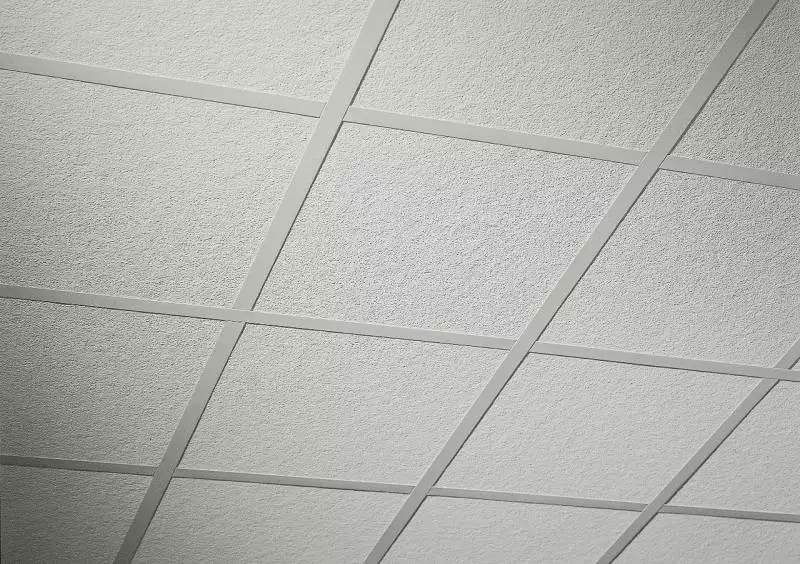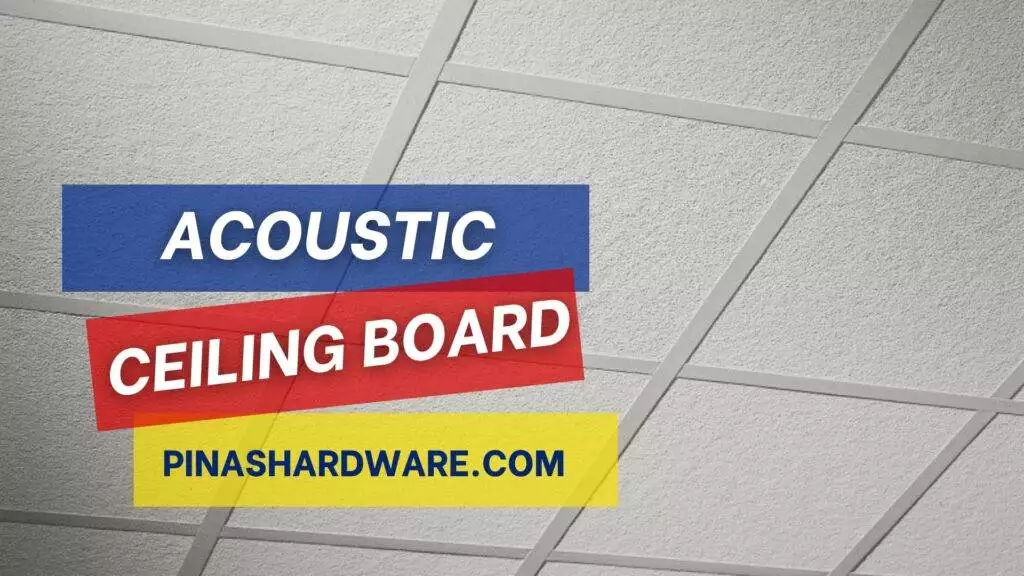Specialized ceiling panels called acoustic ceiling boards are intended to improve sound absorption and lower noise levels in a space. These boards are designed with perforated surfaces or textured finishes to maximize their ability to absorb sound. They are usually constructed from mineral fibers, fiberglass, or other sound-absorbing materials. Acoustic ceiling boards, when installed in a variety of commercial, educational, and residential settings, reduce unwanted noise, echoes, and reverberation to help create pleasant and efficient environments. In addition, they enhance overall acoustic quality and speech intelligibility, which makes them a popular option for places like offices, classrooms, auditoriums, and medical facilities.
Acoustic Ceiling Board Prices
Acoustic Ceiling Board prices vary depending on its brand, size, material, and NRC. Its price ranges from ₱180.00 to ₱500.00.
| Details | Size (Length x Width x Thickness) | Material | NRC (Noise Reduction Coefficient) | Price |
| Knauf Cleaneo | 600mm x 600mm x 15mm | Gypsum | NRC: 0.75 | ₱300.00 |
| USG Boral Ensemble | 1200mm x 600mm x 15mm | Mineral Fiber | NRC: 0.70 | ₱450.00 |
| AMF Thermatex | 625mm x 625mm x 20mm | Mineral Wool | NRC: 0.75 | ₱400.00 |
| Armstrong Ultima | 1200mm x 600mm x 19mm | Fiberglass | NRC: 0.80 | ₱500.00 |
| OWA Sinfonia | 600mm x 1200mm x 15mm | Recycled Polyester | NRC: 0.70 | ₱350.00 |
| CTC | 600mm x 600mm x 15mm | Mineral Fiber | NRC: 0.50 | ₱180.00 |

Advantages of Acoustic Ceiling Board
Better Sound Absorption – Acoustic ceiling boards, which are made expressly to absorb sound waves, lessen echo and reverberation in a space, making it cozier and quieter overall.
Enhanced Speech Intelligibility – Acoustic ceiling boards facilitate better speech clarity and intelligibility by lowering background noise and reverberation, which facilitates communication in offices, classrooms, and other settings.
Noise Reduction – Acoustic ceiling boards improve privacy and lessen distractions in shared areas by reducing noise transmission between floors and rooms.
Aesthetic Appeal – Acoustic ceiling boards come in a range of patterns, sheens, and coatings that can improve a room’s visual appeal in addition to its acoustic qualities.
Disadvantages of Acoustic Ceiling Board
Susceptibility to Damage – Acoustic ceiling boards’ acoustic qualities and visual appeal may be jeopardized by impacts, moisture, or humidity, depending on the material and design.
Installation Height Reduction – When installed, some acoustic ceiling boards may lower the height of a space, which can be problematic in areas with low ceilings or where keeping the room feeling airy and open is crucial.
Potential Allergens – Several materials used to make acoustic ceiling boards have the potential to release volatile organic compounds (VOCs), which can harm indoor air quality and endanger the health of those who are sensitive to them.
Fire Safety Issues – If certain acoustic ceiling board materials are not installed or rated correctly, there may be a greater chance of a fire spreading and a compromise in the safety of the building.
Video of Acoustic Ceiling Board
FAQs
Where are acoustic ceiling boards used?
Acoustic ceiling boards are utilized in a variety of locations where reducing noise levels and enhancing acoustic quality are crucial, such as offices, classrooms, auditoriums, hospitals, theaters, dining areas, and residential spaces.
How do acoustic ceiling boards work?
To reduce reverberation and echo within a room, acoustic ceiling boards absorb sound waves that strike their surface. This lowers overall noise levels and enhances acoustic clarity.
What are the benefits of acoustic ceiling boards?
Better sound absorption, better speech intelligibility, less noise transmission, improved aesthetics, fire resistance, simplicity of installation, and a wide range of application possibilities are among the advantages.
Which materials are utilized to make acoustic ceiling boards?
Mineral fibers, fiberglass, perforated gypsum, and other sound-absorbing materials intended to improve acoustic performance are commonly used to make acoustic ceiling boards.
How are the boards for acoustic ceilings installed?
Depending on the particular product and installation requirements, there are several ways to install acoustic ceiling boards, such as direct mounting to ceiling grids, suspension systems, adhesive attachment, or direct application to existing ceilings.

